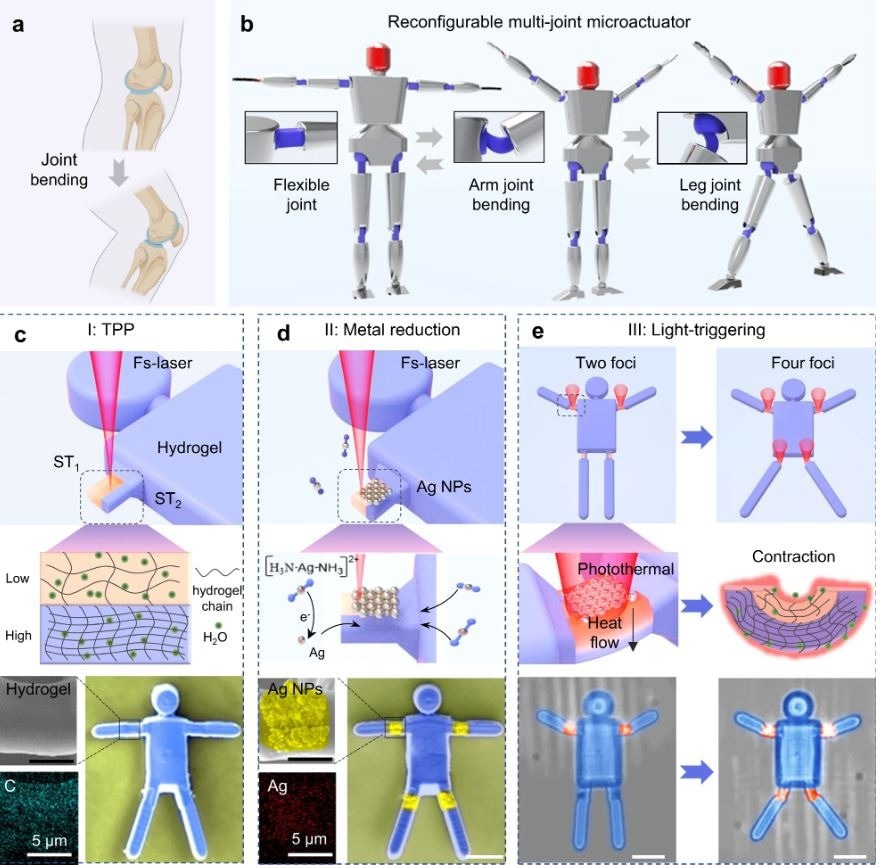A research team from the University of Science and Technology of China (USTC) of the Chinese Academy of Sciences (CAS) under the direction of Prof. Dong Wu suggested a femtosecond laser 2-in-1 writing multi-material processing strategy to fabricate micromachined joints made of temperature-sensitive hydrogels and metal nanoparticles and created multi-jointed humanoid micromachines with multiple deformation modes (>10). The findings were released in the journal Nature Communications.

Design and Fabrication of light-triggered multi-joint microactuators (MJMAs) by two-in-one laser printing. Image Credit: Xin, C., et al. (2023)
In recent years, several functional microstructures have been created using femtosecond laser two-photon polymerization, a real three-dimensional creation method with nanoscale accuracy.
Micro-nano optics, microsensors, and microelectromechanical systems are just a few applications for these microstructures that have shown considerable promise. The difficulty is in using femtosecond lasers for multi-material processing and in developing multi-modal micro-nano mechanics.
Asymmetric two-photon polymerization is used in this study to form hydrogel joints and local silver nanoparticle deposition (Ag NPs) using laser reduction is then carried out inside the joints. To enable directional and angular-controllable bending deformations, this asymmetric light-polymerization approach creates anisotropy in the cross-linking density within certain regions of the hydrogel micro-joints.
The exact synthesis of silver nanoparticles on the hydrogel joints is made possible by the in-situ laser reduction deposition. The multi-joint micromachinery could demonstrate ultra-fast reaction times (30 ms) and extremely low driving power (10 mW) features, thanks to these nanoparticles’ potent photothermal conversion activities.
Eight micro-joints were specifically included in a humanoid micro-mechanism. Multi-focal beams were created in 3D space using spatial light modulation technology to precisely stimulate each micro-joint. The humanoid micromachine can perform a variety of reconfigurable deformation modes, thanks to the cooperative deformation between many joints, which finally results in “dancing microrobots” at the micrometer scale.
Last but not least, as a proof of concept, a dual-joint microscopic mechanical arm may gather many microparticles in parallel and divergent directions by configuring the distribution and deformation direction of the micro-joints.
The dual-function femtosecond laser production technique can generate deformable micro-joints in diverse 3D micro-structured regions, achieving a variety of reversible deformation modes. Future applications in the fields of micro-goods collection, microfluidic manipulation, and cellular operations will have a wide range of opportunities because of the micromachinery with varied deformation modes.
Journal Reference:
Xin, C., et al. (2023) Light-triggered multi-joint microactuator fabricated by two-in-one femtosecond laser writing. Nature Communications. doi:10.1038/s41467-023-40038-x